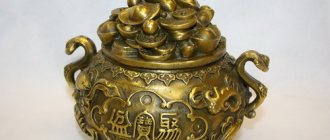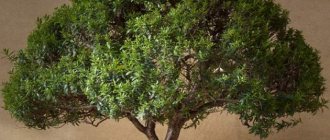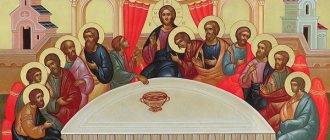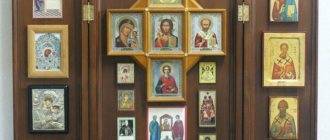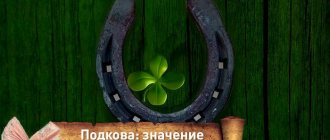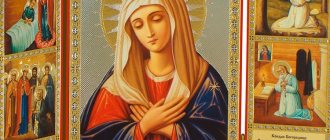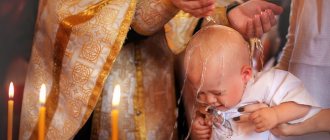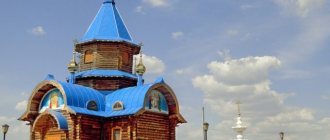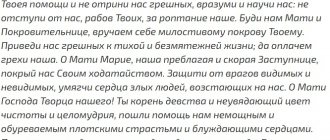When purchasing a handwritten icon made to order in our online icon store, it is possible to take into account the customer’s different wishes for its design. There are basic artistic, narrative and decorative elements that can be used when making an icon and which can make it more sophisticated.
To help our future and already regular customers, we will present these basic elements of icon design. This will help you quickly and more clearly decide on the choice of icon.
We have already talked about icon painting techniques and styles here.
Design and features
An icon case is a small, lightweight box designed to store an icon and protect it from the influence of negative factors - dampness, sunlight, acid vapors, etc. Wall-mounted icon cases, for example, a small analogue icon case, are designed for storing icons at home.
Such devices are similar to opening or blind boxes, for the manufacture of which materials such as wood, glass and plastic can be used. At the same time, an icon placed in an icon case must be ventilated, so such a case a priori cannot be sealed (this would contribute to the appearance of mold and oxides on the surface of the icon). At the same time, the icon case cannot be called an ordinary box, and all because a special microclimate is created inside it, protecting the icon from dirt, dust, soot, acid fumes, etc. In the cavity of the icon case, the icon is fixed using blocks of wood, corrugated cardboard or high density paper. If the dimensions of the icon do not correspond to the dimensions of the icon case, then under no circumstances should its parameters be artificially adjusted by cutting, etc. Such actions can lead to damage to the icon. It is also not recommended to allow the surface of the icon to come into close contact with the glass of the icon case, since there must be air space between the two surfaces.
An icon case that provides suitable conditions for storing icons at home must meet the following requirements:
- when inserting an icon into an icon case, the distance from its surface to the glass of the icon case should be 2-3 centimeters;
- the keys of the icon board, which protect it from deformation, should not rest against the walls of the box for storing them;
- the gap between the key and the side wall should be at least one centimeter;
- if the icon is painted on canvas, then the distance from its surface to the glass should be no more than five millimeters.
Wall icon case
In churches, portable icon cases, which are usually large in size, are used to store icons. Also on sale you can find devices for storing icons, which are decorated with decorative elements - carvings, artificial stones, etc.
Shape of the icon board.
The most commonly used board shape is rectangular. Arched and other types can also be used. Most often, such complex board shapes are made for icons in churches.
The ratio of the height and length of the icon is also important; most often the proportions are selected based on the way the image or subject is depicted. So for life-size icons, icons are used where the height is almost 2 times the length.
| Rectangular shape of icon board | Arched shape of the icon board | Dome shape of the icon board | Complex shape of the icon board | Plot icon: the width (length) of the board is greater than the height |
What does it look like?
An icon case is a case into which the icon is inserted. Products can be wall-mounted, corner-mounted, or floor-mounted. Icons are designed to preserve images of saints from the destructive effects of environmental factors: temperature changes, light radiation, dust, dirt, bacteria. And also inside the icon case a favorable microclimate is created for the image. Therefore, you cannot call it just a box.
Kyoto
Icons for the home most often represent an opening and closing cabinet. Wall products are also homemade.
The image is attached using small blocks of wood. Sometimes the sizes may not match. You cannot file down the edges of the icon in order to insert it into the product. The image should be stored in an icon case corresponding to its size. The dowels of the icon should not be allowed to be pressed tightly against the walls of the vault. There should be at least one cm between them.
Contrary to some opinions, the item does not need to be sealed. Ventilation is required. Otherwise, it will be difficult to avoid mold formation.
Important points briefly:
- Ventilation is important for the icon case;
- There is a space of at least two cm between the image and the glass;
- Do not allow the dowels of the icon to come into close contact with the walls of the product;
- It is unacceptable to adjust the size of an icon to place it in storage.
If these simple rules are followed, the image can be preserved for many years.
But increasingly, glass in objects began to be replaced with plastic. However, it must be taken into account that it is not only unable to protect the icon as well, but also leads to its damage. Due to plexiglass, air access becomes much worse. As a result, an excellent environment for the proliferation of bacteria is formed.
What should a proper icon case be like?
To make a high-quality and durable frame for an icon, you need to know several important nuances. The most important thing is the space between the glass and the image, which should remain after the icon is inserted into the icon case. It should be two or three centimeters. To fix the icon inside the icon case, use wooden blocks, corrugated cardboard or thick paper.
The icon case is also the protection of the icon. Therefore, to preserve the holy face for many years, glass is used, not plastic. The latter bends over time, which negatively affects the condition of the image. In addition, harmful bacteria and mold develop under the plastic, which destroys the paint.
Existing differences
Products are differentiated depending on such factors.
| By location: | - on the wall, - on the floor, - corner, - hanging, - analogue. |
| By location: | - in the temple, - in the church, - at home. |
| By appearance: | - straight, - carved, - figured. |
| By number of icons: | - for one image, - for two. |
| According to the material from which it is made: | - from valuable wood, - from metal, - from plastic. |
| For decorations: | - with wood carvings, - painted, - lacquered, - silver plated, - gilded. |
The cost of the item will also depend on these factors. Even precious stones or metals are used in the manufacture of some works. The cheapest products are made of wood.
You can simply answer the question, what is an icon case? After all, it is also called a temple or a house for an icon. Creating icon cases is a task that requires good craftsmanship. Many people get carried away by making them with their own hands. An amazing work of art can come out of an ordinary box.
Carving on gesso.
A special type of carving made on gesso (multi-layered primer applied to the board before painting the image of the icon). This carving creates a three-dimensional relief.
| Carving on gesso and painting under enamel | Carving on gesso (in the margins) and painting under enamel | Carving on gesso on the margins and halo | Carving on gesso on the margins and halo (on the left is a view of the board before painting the image). |
Macrame icons.
Macrame is a knot weaving technique. It has existed since ancient times. Some historians argue that its origins should be sought in China and Japan, and in the 8th-10th centuries macrame comes to Europe, where, according to some, macrame received a great contribution thanks to navigation. The sail system on ships required specifics in tying knots, as a result of which knots of different beauty and functionality arise, the number of which numbered in the thousands.
In general, the history of macrame can be traced back to ancient times among many nationalities. The same can be said about Rus'. Macrame originated during the pagan period and the Slavs attached great importance to knot weaving. It was more of a sacred (ritual) action, and the drawings themselves reflected the worldview of the Slavs. After the baptism of Rus', macrame began to be banned as a certain type of witchcraft.
A real macrame boom was observed in Europe in the 18th century, and in Russia in the 19th and early 20th. The older generation remembers how during the Soviet Union, woven collars were very popular.
It is difficult to say when the first icon made with knotted weaving appeared. Macrame icons are distinguished by their sophistication, softness, and calming effect.
We can say with confidence that of all the methods of making icons, macrame is the most labor-intensive and time-consuming. And accordingly, such icons are very expensive.
What does the vestment symbolize?
The bliss that reigns in the Heavenly Kingdom cannot be reproduced in the material world. But people wanted to display at least a particle of splendor, and the most accessible means for this were precious metals and stones - their radiance embodied the greatness of the Creator, and their durability reminded that the power of the Lord is eternal.
This tradition also has a theological basis. For example, God commanded that the Ark of the Covenant be overlaid with “pure gold, inside and out” (Ex. 25:11), and St. Gregory of Nyssa argued that divine beauty is “in the charm of the external image, clothed in purple, in order to determine its internal dignity.” However, it is important not to fall into the sin of idolatry, remembering that even the richest decoration is only a shadow of an ideal inaccessible to man.
Gradually, a whole set of symbols arose that made it possible to give the robe a special meaning. Here are some common allegories:
- the golden frame of the icon is the personification of the Lord’s generosity and mercy;
- silver is a sign of purity of thoughts, deliverance from sins and salvation of the soul;
- multi-colored enamel - Christian virtues (humility, kindness, love for neighbors);
- rubies are the embodiment of the Resurrection (victory of eternal life over death), but at the same time - a reminder of the blood and torment of Jesus Christ;
- emeralds are stones of the Holy Spirit, symbolizing hope and renewal;
- sapphires and pearls are attributes of the Virgin Mary, embodying Her meekness, purity and perfection;
- amber was associated with holiness - an unquenchable light that illuminated the Lord's saints. Contemplating radiant gems, a person cleansed himself from everyday vanity and approached Heaven.
Icon “Apostles Peter and Paul” from the 11th century. (236.0 x 147.0 cm) Novgorod State United Museum-Reserve
Making an internal frame for an icon case
If you have already made standard picture frames, then you can safely skip the description of this stage. The inner frame of the icon case is made in the same way. If not, then read on.
Make your own or buy profile bars in a store, cut them at an angle of 45 degrees and glue them together. The dimensions of the bars depend on the size of the icon. Faced with a significant thickness of the shrine? Then the thickness of the frame will be greater.
If the shrine does not have a stretcher, then you will have to do additional work with the canvas. Take regular furniture plywood, fiberboard or MDF with a thickness of 4 to 6 mm and stretch the canvas.
Types of wooden icon cases
The most common material for manufacturing is wood, but metal, glass or plastic are also used for manufacturing.
Kinds:
- wall, floor, portable, corner;
- arched, curly, straight;
- temple and home;
- for one or more icons;
- decorated with carvings, gilding, painting, cast elements, etc.
The craftsman selects the shape and design according to the icon for which the decoration is being made.
Wall mounted
Wall chests can be of various shapes, decorative, simple, glazed, with an opening door or without glass, for one icon or several. The main difference is the mounting for hanging on the wall. The icon can be placed in such a wooden icon case in a church, on the street or at home.
Floor-standing
Floor and wall cabinets can be very diverse in shape and design. As a rule, they are made for icons of large sizes, which is why they themselves are large and even bulky. Therefore, they are located on the floor in churches or on the street next to them.
carved
Carving is the most beautiful and multifaceted type of decoration. It is used around the frame or at the top and bottom, as a frame pattern or a separate design. In such a frame, the icons of the Most Holy Theotokos or the Savior Not Made by Hands look especially festive and solemn.
Direct
The most common form of chest is a rectangle or square, corresponding to the size of the icon. Often found with rounded corners. Simple straight icon cases are often used at home. They come with or without glass doors, mostly in small sizes for easy portability.
Arched
Icons can be different, so the frame for them is made in accordance with the shape. Arched boxes are often made for dimensional icons depicting the saint whose name the baby is named, for example, St. Sophia, St. Eudokia, Basil of Ancyra, or St. Seraphim. Such icons have a size equal to the height of the baby.
Curly
In addition to standard forms, icon cases can have a figured crown - the upper part. The pattern can be varied, from simple, wavy or with capes, to complex, ornate patterns, decorated with carved elements or a cross.
Icon setting - history of works
It is unknown when the first such frames appeared. Probably their prototypes were prefabricated Byzantine shrines made of relief panels (IX-XI centuries). And the most ancient Russian vestments made of embossed silver are dated to the 12th century. They decorate the images of the apostles Peter and Paul, the Mother of God Hodegetria and the Savior Golden Robes (now these relics are in the St. Sophia Cathedral in Novgorod).
In the XIV century. The first type of frames was formed - basmen, from thin sheets of metal rolled onto a matrix with an ornament. Decorative elements were nailed to the icon, and due to the fact that they covered only part of the image (background or clothing), the frame was called typesetting. It was strict and restrained, setting off the drawing, but not competing with it.
The real flowering of this art occurred in the 17th century. The applied decorations, designed in a lush Baroque style, became solid, revealing only the hands and faces of the saints. When making icons in a silver frame, the master used a solid metal plate on which he carved out figures of the righteous, their attributes, outfits, landscapes and miniature instructive scenes, framing everything with curls, frames and inscriptions.
Salary of the list of the icon of the Vladimir Mother of God
Less often, works were made of gold - for example, Prince Andrei Bogolyubsky (1111-1174) ordered such a vestment for the Vladimir shrine of the Virgin Mary. And the robe of the Don Virgin Mary weighed more than 5 pounds (about 82 kg), and a significant proportion of the total mass was made up of diamonds, emeralds, sapphires, garnets and pearls! In addition, pectoral crosses, holy relics, a piece of the Life-Giving Tree of the Lord, panagias (medallions of bishops) and other relics were attached to the base. Unfortunately, this product has not survived to this day.
In the XIX century. frames become cheaper, their production becomes mass-produced: frames are stamped on machines, and voluminous parts are soldered to the base. Such vestments in the spirit of classicism are distinguished by simplicity of patterns, symmetry, and less relief.
The frames of ancient icons were built up over many centuries. They were supplemented with new votive gifts, individual elements were changed, and decorated in accordance with the tastes of the abbot or patron of the temple. Therefore, each robe is a priceless treasure for both believers and researchers. However, in the twentieth century. Due to wars and revolutions, many unique products were irretrievably lost.
Nowadays, salary is an integral part of any image. Craftsmen are constantly working to create exclusive works. Thus, icons made of amber are extremely popular - their warm glow instills peace and tranquility in the soul.
Wooden icon cases
The most important value in a believing family is an icon depicting Jesus Christ, the image of the Virgin Mary and saints. But they need to be protected from negative factors: dust, soot from candles, moisture, temperature changes. After all, you want to preserve icons dear to your heart in their pristine beauty. The miraculous face must be kept in spiritual and material purity, then the icon has a beneficial effect on a person and works real miracles. Over time, an icon case was made to store icons. This is a special cabinet or casket with glass doors. Thanks to faith and hope for the salvation of the soul, thanks to prayers in front of the iconostasis, the icon case creates its own energy of love for one’s neighbor and happiness. Previously, every village house had its own intercessor - an icon. Even if the family was very poor, they found a way to acquire the holy face. Nothing was needed more expensive than that.
Now not only in villages, but also in big cities, people more often begin to turn to the church for help and peace of mind. Faith in God gives strength in difficult periods of life. A city dweller, in the bustle and haste, tries not to forget about his faith and church. You need to atone for your everyday sins not only in the temple of God, but also at home. Therefore, today almost every apartment has a treasured corner with icons of saints. But it’s still better to arrange them in an icon case. They are different. The more skillfully and richly it is decorated, the more pleasant it is to pray without thinking about the bad and without being distracted. Antique expensive icons must be stored securely in an icon case.
The choice of lockers is very large, so you need to buy exactly the one that takes your breath away. Icons have a variety of shapes and finishes. Most often, the frame consists of a wooden carved ornament. The author himself shows his imagination in the design of the product, putting his soul into each work. The craftsman makes frames for home, road, street use and, of course, for the temple. Therefore, the sizes and design are different for everyone. The casket with icons can be placed on the table, on the floor or hung on the wall. In order for the icon case to last for a very long time and be passed on from generation to generation, it is made from valuable wood. There is a removable wall at the back for installing icons, and a glass door at the front. The icon case is decorated with gilding and carvings. But if the icons in the house are not expensive, then the cabinet should match them. When praying, it will be very difficult to concentrate on the image of the saint, because the decorations will be distracting.
A skillfully made icon case creates harmony and peace in the house and fits perfectly into the interior. As a rule, priests advise installing an icon case in the eastern part of the apartment. But sometimes this is impossible. Therefore, it’s okay if the icons are located in another free place. The main thing is that they are not located near the TV, computer, stereo system or other household appliances. The exception is the office, where you can put a small icon case on the desktop. Also, you cannot hang photographs, paintings, or decorative items near the iconostasis. Some Orthodox Christians are of the opinion that the image of the saints should be in the far right corner, so that upon entering the apartment one can immediately bow and read a prayer. There are a lot of different opinions and advice on choosing icon cases. Therefore, you just need to listen to your heart, it will definitely tell you and guide you to the right choice. After all, not one icon will answer a person if he does not have real faith and repentance. Time has proven that an inexpensive icon helps to heal seriously ill people with hope and faith in their souls than one decorated with gold for the restless. Peace and love to your home.
How did the tradition begin?
People have long turned to the Creator with various requests, and when their aspirations were fulfilled, they tried to thank God to the best of their ability by making various offerings in His honor. Such gifts were called votive (from the Latin word “votum” - desire) or votive. As a rule, these are jewelry, amulet or pectoral crosses.
According to custom, such items were placed near the relic at which prayers had previously been offered. Over time, the number of pendants became larger and larger; they covered the face and prevented people from approaching the icon. In addition, some theologians considered this ritual a relic of paganism - for example, the Decree of the Holy Synod of 1722 strictly prohibits bringing “gold and silver coins and pennies and any treasury” to the images.
Svyatogorsk Icon of the Mother of God with Votive Gifts
And then the believers, who sincerely wanted to glorify the Lord and His associates, began to create frames for the relics from the offerings. They were called chasubles, shata, circles and “icon forging”, but the generally accepted name (which appeared, however, only in the 16th century) was icon frame. This false decoration is found in almost all countries of the world, but it is most widespread in central and eastern Europe. And in Orthodoxy, the production of such products has become a separate type of decorative and applied art - many travelers admiringly noted in their diaries the luxury of Ukrainian and Russian shrines.
The materials for skilled craftsmen were noble metals, brass, copper and even tin. The forged base was supplemented with gems, embossing, engraving, enamel, filigree, pieces of colored glass and foil. The reverse side was lined with soft red velvet or filled with wax. There were also embroidered frames, when durable fabric was decorated with pearls and beads. Sometimes, if the offering was especially valuable, it was attached to the image without any alterations - this was done with the diamond crown of Catherine II, which she crowned the face of Our Lady of Kazan in 1768.
Salaries have not only an aesthetic, but also a practical purpose. Icons painted on wood suffer from candle soot, moisture, temperature changes and the touch of parishioners - the drawing darkens, becomes covered with defects, the paint cracks and crumbles. And the robe protects the shrines from harmful influences, extending their service life.
Tikhvin Icon of the Mother of God in frame and with frame removed
A little history
Initially, icon cases were created not to store images of saints, but to store other things. Jews preserved sacred books in them, Christians preserved the relics of saints.
Such storage became most popular during the Middle Ages. At this time, only icons began to be stored in boxes.
Ancient products corresponded to the architecture of the sanctuary in which they were located.
Expert opinion Sidorenko Alexander Antiques appraiser, numismatist
Now icon cases are an integral part of the temple, as well as works of art. Anyone can buy a product according to their desires and capabilities.
Well, new technologies have done their job. Now you can purchase the creation not only in churches, but also on the Internet, but the cost will be higher.
The scale of the image of the figure of a saint (figures of saints).
This scale determines how the saint(s) are depicted. There are icons: life-size, throne, waist, chest, shoulder, main.
For certain saints, the way of depicting them has developed and is already a tradition. For example, Peter and Fevronia are made to appear full-length, John the Theologian is depicted sitting on a throne.
| Home | Shoulder | Belt | Rostovaya | Throne room |
The first stage of making the icon case
To make an icon case with your own hands, you need to measure the dimensions of the icon. Next, you need to properly design the icon case: make a drawing and put down the dimensions. After this, you can start drawing a sketch of the decorative elements. The best wood for making a shrine is considered to be pine or linden. You can use pine for the frame of the icon case, and linden for decorative carving elements. A home icon case can be made from birch, ash or fruit tree wood.
There should be an air gap between the icon itself and the glass door, which is equal to the sum of the thickness of the icon board and the protruding part of the dowels. The main thing is that this value is at least two centimeters. The keys should not rest against the walls of the icon case. A gap of one centimeter is usually left between the edge of the dowel and the wall of the shrine.
The ark.
The Ark is a recess on the front side of the icon, forming a flat surface. In ancient times, the ark served as a functional part when covering the icon board with gesso. Also, artistically, the ark creates the effect of a window from another world.
Currently, icons are made both with and without the ark. At the same time, there are options when the husk (the edge separating the surface of the board from the surface of the ark is covered with gold.
| Icon with a rectangular ark | Icon with an arched ark | Icon with an ark and a gilded husk |
How to make an icon with your own hands from a photograph
There are many options for transferring photo icons to a wooden surface. The easiest way is to print using a printer on a well-treated wooden surface.
But the most valuable crafts are those made by a person with his own hands. He puts his soul, skill, and energy into them.
Here are several options for applying an image from a photo to a wooden surface:
A photograph of the icon “Mother of God with a baby in her arms” is printed on a paper backing using a laser printer. Take clean plywood or a wooden plank cut to the size of the photograph.
The surface of the wood is smeared with diluted PVA glue at the rate of 3 parts glue and 1 part water. This is done so that the glue is absorbed into the wood texture.
Leave to dry for 8-10 hours. The surface should be moistened with water and the paper should be gently wiped away from the image. Varnish the image.
Some people use parchment for printing in order not to rub off the paper. The technique is the same, only after wetting the parchment comes off completely as a sheet, leaving the image on the wood.
You can stick photos printed on paper to a hard surface. There are a lot of options.
Gilding.
For gilding, gold leaf is used - very thin leaves of gold applied to paper sheets. During gilding, this gold is transferred to the surface using a special technology.
Gold plating of an icon can be in different forms: full gilding (both background and frames), gilding of the background, gilding of the halo, gilding of individual parts: clothing, elements of the landscape (drawing), background, fields.
The same gold can look different. This brilliant effect is created by polishing gold, as well as glossy varnishes. To reduce the shine effect, matte varnish is used. To give the gold a more yellow color, several layers of varnish are applied. The color of gold is also influenced by the special base on which it is applied.
Gold can also be given a mirror effect (strong reflection), for this it is polished in a special way.
Gold blackening is used to decorate gold surfaces.
| Full gold background, matte gold color | Gilding of fields and arches | Gilding the outside of the icon arch | Gilding of the halo and husk | Full background and some details of clothes with blackening on gold | full gilding of the background and some details of clothing with blackening on gold | Gilding on the face with polishing (mirror effect). |
How to make a homemade icon case with your own hands
An icon case can be made at home, as it has a fairly simple design. In essence, it is a simple wooden box with a front wall made of transparent material - glass.
Floor icon case
In order to make a good icon case, it is recommended to take measurements and make a drawing. According to the existing drawing, a frame is made from boards.
Attention! To make an icon case, it is recommended to use pine, birch or oak. The glued and dried frame is treated with sandpaper
The front door of the icon case consists of a frame and glass. The frame is attached to the frame of the icon case using fittings, the glass is fixed with sealant. At the final stage, the icon case is varnished or treated with stain
The glued and dried frame is treated with sandpaper. The front door of the icon case consists of a frame and glass. The frame is attached to the frame of the icon case using fittings, the glass is fixed with sealant. At the final stage, the icon case is varnished or treated with stain.
Second phase
When making a decoration such as an icon case with your own hands, it is necessary to take into account the bending of the warped board from which the image is made. In the inner frame of the wooden shrine, a figured cutout should be made for this bend. The margin should be up to two centimeters. Next, you need to glue a velvet strip inside the wooden cabinet. After all, the holy face should not come into contact with the icon case. Otherwise, the icon board may jam.
After these manipulations, it is necessary to fix the icon in the icon case. This is done using small wooden blocks or thick cardboard inserts. At this stage you can insert the glass. The next step is to cover the icon case with stain, and then with a layer of varnish or paint. Ready. The fittings can be installed. We should not forget that the icon case is not only a decoration for the icon. He protects the holy image, which must be treated with due respect. By making an icon case, you can protect an icon that is valuable not only materially, but also spiritually, from the adverse effects of the environment.
How to make an icon case with your own hands
Despite the apparent complexity, such a box can be made with your own hands. Materials, shape, color, fittings depend on the customer’s preferences, but there are general rules. First of all, you need to measure the icon for which the product will be made, stock up on the necessary materials and tools and follow the instructions.
Tools and materials
To make a chest, you need to purchase certain materials and tools.
First of all you will need:
- fine-tooth hacksaw;
- wort (not necessary, but with it the cuts will be smoother and saves time);
- clamps;
- drill;
- metal ruler-corner;
- roulette;
- pencil;
- sandpaper;
- elastic spatula;
- screwdriver;
- hammer;
- knife with replaceable blades;
- sealant gun;
- brushes
The choice of materials is more painstaking and depends on the taste of the manufacturer, so the presented set is more of a recommendation.
Basic materials:
- glass;
- wooden boards;
- accessories;
- varnish and paint;
- stain;
- hardboard (for the backdrop);
- for the frame where the glass is inserted, you can take a baguette;
- small and medium nails and screws;
- wood glue;
- sealant for fixing glass.
Step-by-step instruction
In addition to the size and appearance, you need to decide on the type of icon case: it will be floor-standing, hanging or portable. Initially, you can make a simple drawing so that you can follow it in the future and not return to measurements.
Then you need to make a frame from wooden boards. They can be made of pine, birch, oak or fruit trees, with a cross-section of 15 by 45 or 15 by 50. The planks must be cut according to the dimensions of the drawing, strictly at right angles. The frame is assembled using glue, lubricating the joints with it and connecting according to the drawing. After which the structure should dry, then it can be treated with sandpaper.
The next step is marking and making the door. Initially, a frame for the glass door is made using a wooden layout and wort for cutting at an angle of 45 degrees. The frame and layout are also assembled and tightened using glue. You need to make sure that there are no gaps at the joints.
Afterwards, the back wall is made from hardboard; it should be 5 millimeters smaller than the front perimeter.
Next, the frame is sanded and hung onto the dried frame using fittings. Then a hardboard wall is nailed and glass is inserted into the frame using sealant.
At the final stage, if necessary, the product is puttied, stained or oiled, and varnished.
What do you need to know to make an icon case at home?
An icon case for an icon can be made at home. It's not as difficult as it seems at first glance. To do this, you need to stock up on wooden boards, carpentry tools, glass and fittings. You also need to purchase stain, varnish and paint. First of all, you need to decide for which icon the icon case will be made, and where it will be installed. The lighting of the location of the icon case should also be taken into account. Based on all this, you need to choose a future color shade to frame the image. You also need to clarify what kind of shrine the shrine will be, floor or tabletop. Another important point is the number of images that will be placed in the icon case.
History of the red corner
Home iconostases appeared in Ancient Rus'. A whole corner was set aside for them, which was called red (i.e. beautiful). In this place, icons were placed, candles and lamps were lit. In the morning and evening, as well as at times of special spiritual need, household members said their prayers here.
The iconostasis of those times was a multi-tiered shelf on which a god was hung - a small curtain that covered the images of saints and the Savior on the sides. The icons were hidden under the gospel - a special cloth that was pulled back only during prayer. It was no coincidence that such a tradition appeared in Rus'. It is known that the first image of the Savior would have been created by Himself, according to His will of God: after Jesus sprinkled his face with water and wiped it with ubrus (cloth), His face remained on this canvas. He sent this painting to the sick ruler of Asia Minor, Abgar, thanks to which he was healed. After this, the prince gave the order to nail the sacred board over the gates of the city. After 900 years, the sacred image was transferred to Constantinople. Now every year on August 29, Orthodox Christians celebrate the feast of the discovery of the image of the Savior Not Made by Hands and consecrate hand-woven fabrics.

